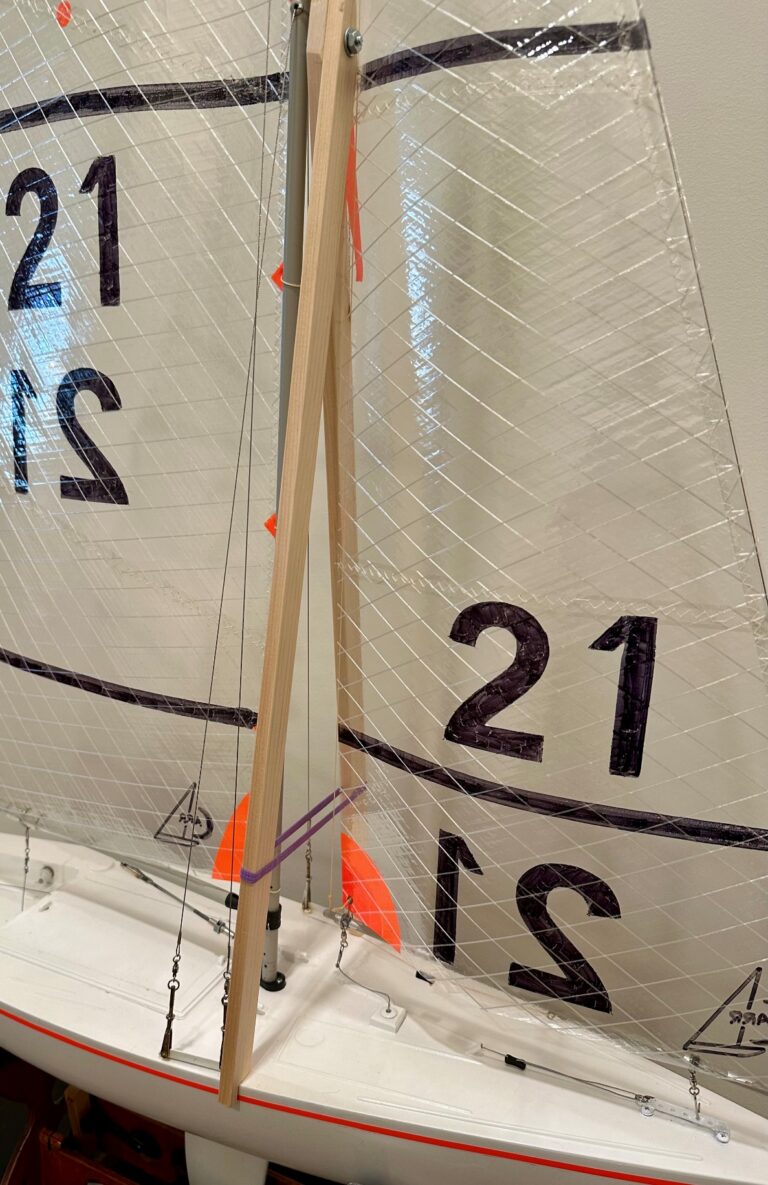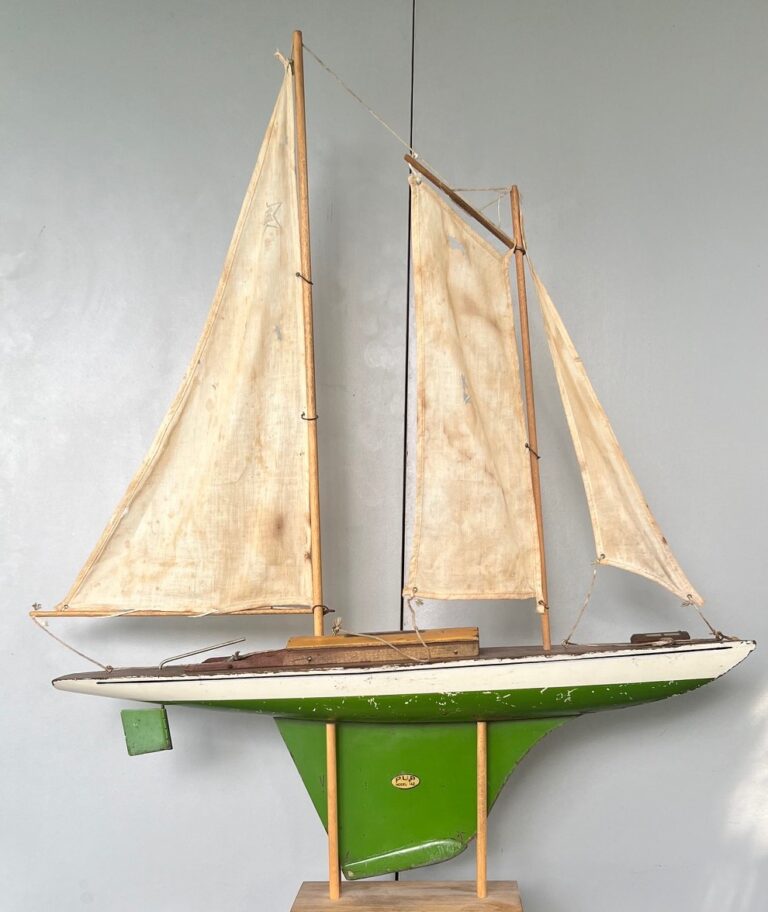by Charlie Roden
This is my first report as your Vintage Marblehead Group Coordinator (VMGC). I can be reached by mail: Charles Roden at 19 Oak Glen Lane, Colts Neck NJ 07722 or by phone at 732 462 7483 or by email at c.roden-5@worldnet. att.net. Having sailed my VM at the Wooden- Boat Show at St. Michaels in June and raced at Port Washington in July, I feel that our group is off to a good start. The Port Washington Regatta was a friendly, low-key, protest-free event that I believe will be the hallmark of the VM Group. In addition several sailors have built vintage boats or have them on the launching ways and I know of at least one company that is offering a one design vintage boat (http://www.cheerio.com) This has been a busy, exciting year for vintage sailors.
A set of VM rating rules was established and placed in effect this year as a result of the experience gained from the preliminary races over the past few years. The rating rules, based on the 1954 M Class rules, recognize the difference in 40 years of evolution of a development class by establishing two divisions: The Traditional Division consists of boats built from existing designs or new designs which conform to the characteristics of the boats that were built before and during 1945. The High Flyer Division consists of boats built to existing designs or new designs conforming to the characteristics of boats built after 1945 and before 1970. When numbers allow, these two divisions will be raced separately and in all cases awarded separate trophies. Anyone wishing a copy of these rules should send me a request. At the time these rules were released it was agreed to try them for a year and then consider revisions. I would like to speak to possible changes later in this article.
For the past six months we have been registering VMs and assigning sail numbers. If you wish to register a VM, please contact me for a registration form. We are requesting a two dollar one time registration fee to cover copying and mailing costs. Existing sail numbers may be selected on a first come first served basis. As of this writing fifteen boats have registered.

We have now adopted a Vintage Marblehead sail emblem consisting of a nested “V” above the “M” as shown in the figure, thanks to a suggestion by Harry Mote. The letters are 1 1/2” tall and 1 1/4” wide, with a thickness of 1/4”. The “V” is separated from the “M” by 1/16”. The “M” would always be in black and the “V” may be in a color of your choice, perhaps to match the color of your sail numbers. This emblem need be placed only on the starboard side of the mainsail on the upper quadrant. You can make your own or send me $2.00 for a thin self-adhesive stick-on. I presently offer the “V” in red, white, black and blue.
Speaking of black and blue, let’s talk about possible changes in the VM rating rules. In my discussions with vintage sailors everyone seems happy with the 1945 and before, and post 1945 split. The early Traditional boats are characterized by a short waterline, shallow keel, low rig, and a skeg rudder. The High Flyers have a full waterline length, deeper keel. tall rig and balanced spade rudder. The performance differences of boats in the two divisions is significant and the split makes the racing of Vintage boats more equitable and more fun.
The one sticky point is the issue of skeg rudders versus balanced spade rudders. Since the early boats were not designed for R/C control and racing as we know it today, and many sailors have put deep spade rudders on these early boats to adequately steer them, particularly in areas where the winds are light and fluky. In areas where the winds are generally stronger, steering has been less of a problem and many of these sailors have felt that the Traditional boats should remain with the fixed skeg rudder. The initial rules were set up recognizing this fact and mandated that any boat with a balanced rudder must sail in the High Flyer division. This was all well and good, but has created another inequity in that the early boats with spade rudders must now compete with the true High Flyers with their high rigs, full waterline length, etc.
As noted in the last newsletter, JR LeBlanc has offered a way out of this dilemma, which I believe deserves serious consideration. JR has instead built a balanced rudder on a Cheerio that is of the same shape and size as the original skegrudder combination. This rudder provides excellent steering. For purists, including myself, I could paint a brass-like rudder post in the center of this rudder and defy anyone to tell the difference from the original Cheerio skeg and rudder. What is being suggested is that boats equipped with balanced rudders of the size and shape of the original skeg rudder on any 1945 and before boat be allowed to sail in the Traditional division. Those who wish to continue to use a modern deep balanced spade rudder would continue to sail in the high flyer division with all of its attendant disadvantages. I would like to hear from you on this issue as well as receiving recommendations for other changes to the rating rules.
There are other group issues to discuss such as measurement certificates and display or static judging at regattas. Several people have suggested the use of a self-measurement certificate for the VM group and measurement at regattas only when challenged by another competitor. At the present time the Schooner Group is basing regatta awards on the combined display and racing scores. Some have suggested that this practice be extended to the VM group while others feel that separate display and racing awards should be made. Comments are invited. I am prepared to receive some lengthy email messages in the near future.



